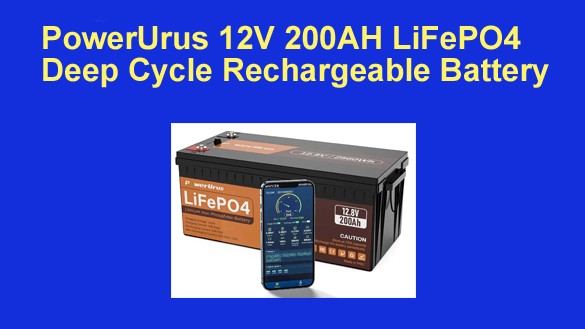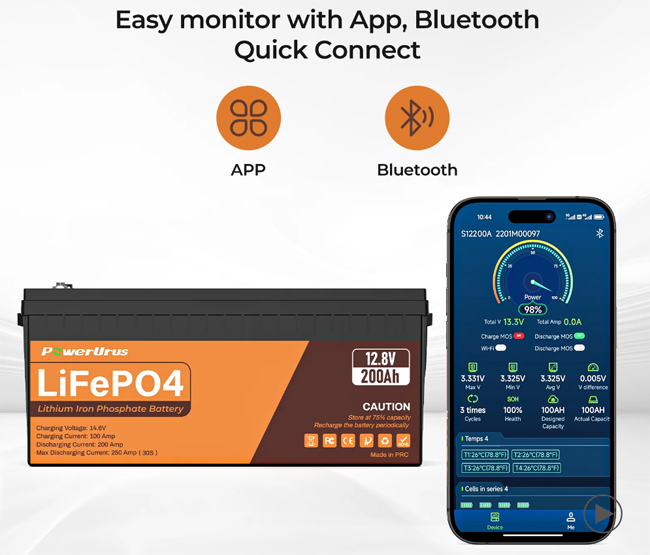 A couple of years ago I made the decision to take my home office off the grid and start powering it with a small solar power generation/storage system.
A couple of years ago I made the decision to take my home office off the grid and start powering it with a small solar power generation/storage system.
Simply put, I grew weary of not being able to work during the outages that frequently shut down the power grid in my rural neighborhood.
I procured the parts necessary to build that first solar setup and I was so impressed with the results that I decided to take my entire home (mostly) off-grid, one step at a time.
To that end, I set about acquiring the parts I’ll need in order to build additional small solar power systems to power the various sections of my home.
Why not one big system?
I have several reasons for going with four small, and independent solar systems instead of just one large system:
1 – Affordability
By taking just two or three rooms off grid at a time I can complete each project without laying out a massive pile of cash or going into debt.
2 – Flexibility
Since the power requirements (in watts) vary from room to room, I can build less powerful systems for the rooms that require less power and beefier systems for the rooms that require more.
3 – Redundancy
For me, this is the biggie. Powering each section of my house with it’s own independent solar setup pretty much guarantees that a single component failure (a charge controller or inverter going bad, for example) won’t shut off power to the entire house.
4 – Protection against lightning strikes
Having multiple solar power systems that are independent from one another makes it far less likely that a lightning strike will damage or destroy everything in the house in one feel swoop.
Choosing a battery
As most anyone who has installed an off-grid solar power system will tell you, the most expensive components in a typical system are the batteries.
For my first system I used 12 volt 100Ah LifePo4 batteries and connected them in a serial/parallel configuration to create a 24 volt system. While that system works exceedingly well, I decided to go with a larger battery for my next build.
When all was said and done, I decided on a PowerUrus 12V 200AH LiFePO4 Deep Cycle Rechargeable Battery.
Specifications
This particular battery from PowerUrus has some fairly impressive specs:
- Voltage / Capacity: 12.8 Volts / 200 AmpHours / 2560 WattHours
- Low temperature cutoff protection (automatically stops charging when temp drops below freezing in order to protect the battery from damage)
- Built-in Bluetooth connectivity (you can monitor the status of the battery with your phone or tablet)
- 200 Amp Battery Management System (BMS)
- Premium Grade A cells
- Maintenance free
- Designed to last for 4,000 discharge/charge cycles and up to 10 years
- IP65 Level Waterproof
- 5-Year Warranty & Professional Tech Support
Packaging, shipping and delivery
The PowerUrus website promises fast and free delivery to addresses within the continental US and the EU, and my experience bore that out. In fact, I received my battery in just three days.
I was extremely impressed with the way they packaged this battery.
First of all, they wrapped the battery in a thick plastic bag, then placed it in a strong, spacious box and padded it with plenty of well-fitting foam.
After that box was sealed they placed it inside a second strong box and sealed it up tight. This has to be one of the best packaged products I have ever received.
What’s in the box?
As mentioned above, after opening the outside box I saw that the actual battery was shipped inside a second protective box.
Inside the inner box was the battery and a small, but very informative user manual. The print in the manual is a bit small, but not as small as I’ve seen in some other manuals. Just be aware that if you have less than perfect vision a magnifying glass might well come in handy.
All the other batteries I have received came with a set of red and black plastic covers for the battery terminal bolts, but this one did not.
The lack of these covers doesn’t affect the operation of the battery in any way, but they do offer some protection against dangerous short circuits that can result if a metal tool or other object were to come into contact with both of the battery terminal bolts at the same time.
Initial state of charge / first charge
As is typical for LifePo4 batteries, this one arrived in a partially-charged state (12.7 volts according to my multimeter).
The charger I used supplied 10 amps of charging current and it took several hours to fully charge this battery. That’s pretty much what I expected for a 200AH battery.
Discharge / Capacity test
Before connecting the battery to the other solar power system components I conducted a complete discharge and capacity test by connecting a 1200 watt inverter and a 900 watt portable heater. This battery supplied a total of 211 AmpHours, which well exceeds its 200Ah rating.
Connection to the other off-grid solar components
After recharging the battery I connected it to a system consisting of four 100 watt solar panels connected in series, a 100 volt/30 amp solar charge controller and a 1200 watt pure sine wave inverter.
Every component in the system is protected by an appropriately-sized fuse or circuit breaker (very important).
This is what that system looks like:

Loads and usage
This system is now powering my garage (two 500 watt garage door openers plus several lights and outlets) plus the TV, Roku box, ceiling fan and lights in my den.
On average, the daily power consumption of everything I have running from this battery has been leaving its depth of charge at around 70% by the next morning. Granted, the solar days are longer in the summer, but these results are quite good for a system that’s powered by a single 12V 200Ah battery.
Closing thoughts / recommendation
Overall, I came away quite impressed with this battery. It’s sturdily built, it remains cool under continuous heavy load and my discharge test revealed that it actually exceeds its 200Ah capacity rating.
Bottom line, this is an excellent battery for the money.
If you’re planning to build a small to medium-sized off grid solar system of your own, I don’t believe you’ll find a better value in a LifePo4 battery than this.
